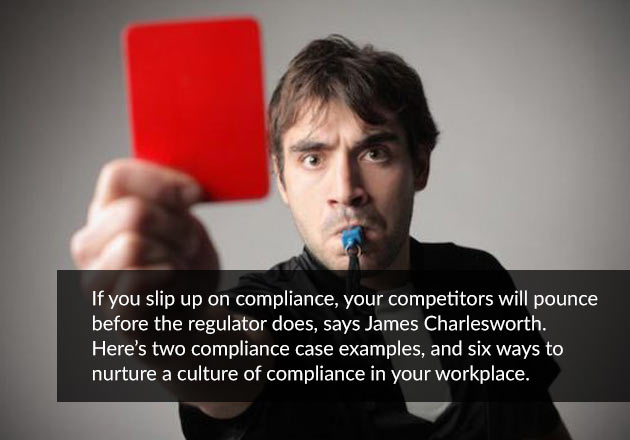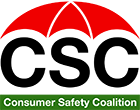
Marketing Magazine, Australia—No matter how prominent your brand or how big your budget, over-promising in your advertising or being a tad too clever with your choice of words, is playing with fire. In the worst-case scenario your brand promise will go up in smoke, along with your profits.
Reckitt Benckiser’s Nurofen
Nurofen is a case in point: the Reckitt Benckiser-owned painkiller brand recently made Australian consumer law history for all the wrong reasons after the ACCC appealed a decision to fine the company $1.7 million for misleading conduct. The Federal Court had already found in the regulator’s favour, ruling there was no evidence to support Nurofen’s claim that its Specific Pain range targeted pain in specific parts of the body but the ACCC wanted the fine increased, to be more of a deterrent against misleading conduct.
That fine was later tripled to more than $6 million – specifically targeting the brand’s Australian profits – a decision recently upheld by the Australian High Court. Reckitt Benckiser said in a statement it was “disappointed” with the outcome but accepted it may have misled consumers who did not realise products labelled as targeting specific areas, such as back pain, period pain, migraine and tension headaches, would be just as effective for other body parts.
Bunnings in New Zealand
It’s a brand on the ascendency. The Aussie retailer, part of the Wesfarmers conglomerate, grew its business on the promise that ‘lowest prices are just the beginning’. It is now extending its success overseas, having taken over the massive Homebase retail chain in the UK.
Over the next years it will be rebranding all UK stores. It’s even exported the Aussie sausage sizzle, last month using it as the centrepiece for the launch of its first Bunnings-branded warehouse in St Albans, north of London.
It’s a different tale across the Tasman, though. The Commerce Commission (CC), the New Zealand regulator, has filed 45 charges against Bunnings for misleading advertising. Despite its claims, apparently, Bunnings doesn’t always have the lowest prices. That’s the conclusion of an 18-month investigation that CC finished last year.
The New Zealand action – which is believed to have been sparked by a competitor’s complaint – could cost the retailer as much as $27 million.
In Australia, Bunnings continues to use the ‘lowest prices are just the beginning’ line, but backs it up by prominently spelling out exactly how it aims to deliver on that promise on its website: “We don’t pretend to be the lowest at every instant on everything, which is why we offer every customer a price guarantee. Where, if you find a competitor’s lower price on the same stocked item, we’ll beat it by 10%.”
In many ways it’s a landmark case that doesn’t just relate to a few mistaken claims in ads and brochures. The price guarantee is at the very heart of Bunning’s sales pitch.
If it hasn’t been able to deliver on the promise, it’s not just the fine it’ll have to pay – it’ll need to work on a new marketing proposition. Then there’s the damage to the brand’s credibility in the mind of customers who believed they were getting the best price – just by shopping at Bunnings.
Over-promising is a risk marketers continually face. In a competitive landscape marketing chiefs will push as far as they can to create a message that stands out, but is it compliant with enforceable regulations? A word out of place can have serious repercussions. Internet providers, here and overseas, have frequently been lambasted for use of the word ‘unlimited’ when promoting online download allowances, for example.
For the marketer, legal sign-off is a necessary evil. It can be a disappointing experience – watching a line being cut through the copy, watering down the potency of your messaging. But, as Bunnings may well demonstrate, the alternative can be costly.
‘Some of the lowest prices are just the beginning’ doesn’t quite have the same edge, does it?
Two things can come out of that tete-a-tete between the marketer and the legal counsel:
- firstly, a reduced chance of being landed with a fine from the regulator, and
- secondly, the marketing head will need to be smarter about the brand’s strategic positioning.
If you can’t say it, it can’t be a unique value proposition.
It forces the marketing team to think hard about what really sets a brand apart. In the case of Bunnings it could be experience and friendliness – something the company promotes through the use of staff in its TV campaigns, but doesn’t specifically spell out as a benefit.
Obtaining the correct approvals is crucial, but without the communication and training to create a culture of compliance, even the best processes will fall down. New members to the team will miss crucial stages in campaign delivery if they aren’t aware of the procedure.
There are some simple things marketers can do to help ensure their compliance processes are robust enough to withstand regulatory examination.
- Build a culture of compliance
Ensure information on regulatory requirements, compliance frameworks and approval requirements – such as whether and when legal sign-off is required –is located in a central repository, regularly updated, frequently communicated to marketing teams, and well-understood by them.
- Make it easy
Whatever system you instigate, making it easy and intuitive to use is the best way to ensure your team sticks to it.
- Maintain continuity of process
Ensure staff turnover in marketing or legal does not affect your risk management and compliance framework. Conduct regular training and monitor how well teams are adhering to compliance procedures.
- Automate it
Using technology to automate the approvals process – such as ensuring work cannot be approved before it has been signed off by legal – can help take some of the risk out of risk management. A modern marketing operations platform can help you build in compliance procedures relatively easily and quickly.
- Create an auditable trail
Whatever system you employ should create an auditable trail that makes it easy for both internal and external auditors to understand the process all campaigns go through before hitting the market, regardless of the media channel used.
- Conduct your own internal audits
It’s one thing to establish compliance frameworks but another to ensure all employees are adhering to them.
Establishing an independent internal audit group to conduct checks of all divisions at regular intervals will help keep you ahead of the regulators.
In a competitive landscape, if it’s not the regulator pulling you up on your advertising, it’ll be your nearest competitor: few others have the motivation to scrutinise your claims like your closest rivals.
A claim that’s perceived as false will invite demands to pull ads and publish a retraction or face litigation. An audited process, where every box is ticked, will ensure your legal team has asked the questions beforehand, and is armed to quickly respond to such complaints without your campaign missing a beat.
Marketers are getting to grips with marketing software to place ads and manage customer communication. They need to ensure they’re using a similarly methodical approach to campaign delivery. Otherwise, your name will be out there, but in ways that could be damaging both to your brand’s reputation and to your bottom line.
James Charlesworth is CEO of Simple.
